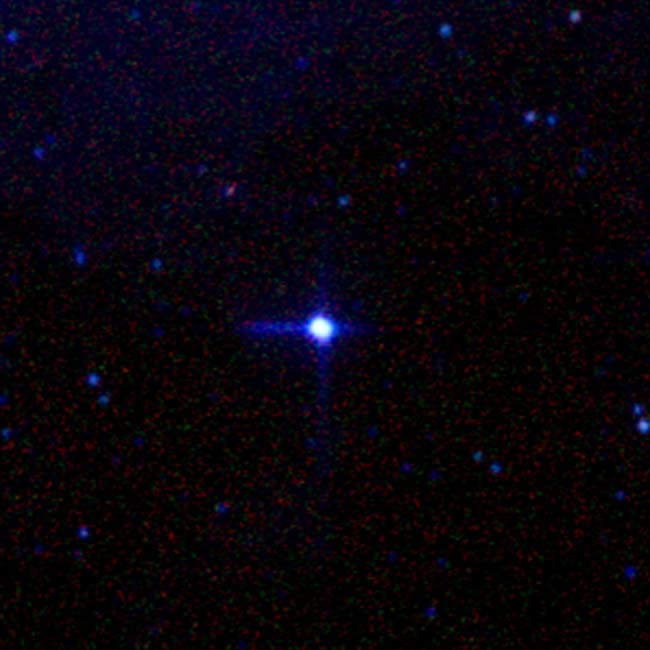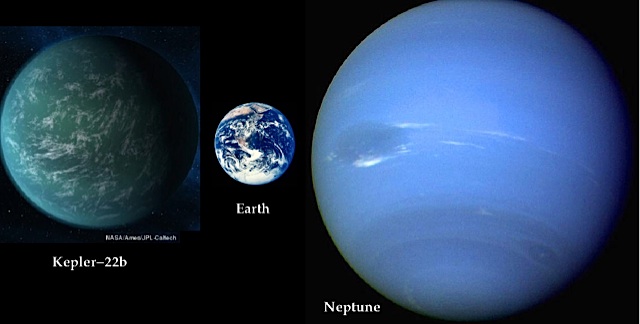Concept art via NASA, ESA, and G. Bacon/STScI
This year was a big one for exoplanets. Astronomers added a slew of candidates to the thousands-long list of potential exoplanets and confirmed fifteen off that list to be the real thing. But we still haven’t found Earth's twin, which is still the elusive holy grail of exoplanet hunters. But that might not be the case this time next year. Will 2013 be the year of a twin Earth?Venus and Earth
We’ve been looking for another Earth for a long time. Before scientists knew that stars were distant suns playing host to their own planetary systems, they looked for similarities with our planetary neighbors. Victorian scientists referred to Venus as Earth twin for its similar size and distance from the Sun. Of course, Venus is roasting hot, rotates backwards, and has a day as long as its year – the planets are fraternal twins at best.The Earth’s twin search took on a new dimension in 1995 when astronomers started finding distant sun-like stars with planetary systems. The first exoplanets they found were hot Jupiters. These failed stars turned massive planets are easy to see as they transit their host stars. The star’s light dims when the planets passes between it and a telescope; this is how NASA’s Kepler space telescope has found so many exoplanet candidates.As detection methods and instruments improved, smaller planets came into view. Astronomers started finding rocky terrestrial bodies. Some are similar in size to the Earth, some have water, and others are in the right orbit to have liquid water exist on the surface. But still, we haven’t found a twin. Even the most Earth-like planets are either too big or orbit too close to their stars to have right conditions for life as we know it on Earth.Exoplanet hunting astronomers are hoping their luck will change in 2013. So far, just 100 of the 2,300 candidate planets Kepler has found have been confirmed as true exoplanets. Astronomers hope to confirm another 80 percent of the current list of candidates as real planets, hopefully finding a twin Earth in the mix. Another instrument that might find our planetary twin is HARPS. Short for High Accuracy Radial velocity Planet Searcher, HARPS sits on the European Southern Observatory's telescope in Chile and detects gravitational wobbles planets induce in their host stars. It’s a common phenomenon; Jupiter is so big that it makes the Sun wobble. HARPS‘ extreme sensitivity and capacity for long-term exposures might make it the frontrunner in the exoplanet search.The Alpha Centauri system imaged from Earth. Credit: MSX/IPAC/NASA
It’s sort of a matter of time before we find another Earth. If there are 200 billion stars that host 50 billion planets, and if just one in every 10,000 is similar to Earth we’d have 5 million possible twins. Those aren’t bad odds.But then there’s the philosophical side of the twin Earth discovery: will we be moved, shaken to our collective core to find that there’s another planet like ours out there?The poetic analogy tells us that finding a twin Earth will be like realizing there’s a continent on the other side of a seemingly unending ocean. It will give us a feeling of closeness, shrinking the cosmic ocean to something manageable. It will give us a collective purpose and need to leave the Earth and explore the universe. This discovery will effectively start us on the path to becoming a true multi-planetary species.But crossing the cosmic ocean isn’t quite like crossing the Atlantic. Let’s say one of the Earth-like planets around Alpha Centauri – our nearest star – proves to be a twin Earth. Alpha Centauri is 4.3 light years away, about 25.6 trillion miles. Since we can’t travel anywhere close to light speed at the moment, it will take a spacecraft thousands of years to make the journey to our stellar neighbor. (Columbus reportedly crossed the Atlantic in just five weeks.) So any mission – robotic or manned – to Alpha Centauri will be a multi-generational one. With current propulsion methods, it will take tens of thousands of years to send a spacecraft that far and get a signal back. If NASA gets its warp drive up and running, it’ll be a different story.Kepler-22b size comparison to Earth, via Galileo's Pendulum



